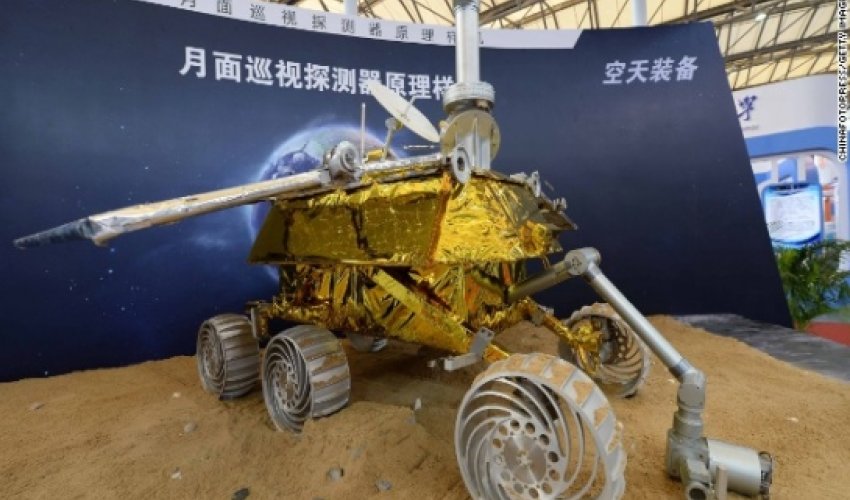Beijing will launch its first lunar mission next month

China is launching its first lunar probe in early December, state-run Xinhua news agency reported Tuesday, just over a decade after the country first sent an astronaut into space.The Chang'e-3 probe -- which will blast off from a Long March 3B rocket in Sichuan province located in southwest China -- is expected to land on the moon's surface in mid-December, a spokesman for the China's State Administration of Science, Technology and Industry for National Defence told Xinhua.The unmanned mission marks China's first attempt at a soft-landing on the lunar surface and the first soft-landing on the moon since the Soviet Luna 24 probe in 1976.On landing, the spacecraft will release Jade Rabbit (called Yutu in Chinese) -- a six-wheeled lunar rover equipped with four cameras and two mechanical legs that can dig up soil samples, a designer for the rover told Xinhua earlier this month. A public poll determined the the solar-powered robot's name, which comes from the white pet rabbit of the Chinese moon godess Chang'e. The slow-moving rover will patrol the moon's surface for at least three months, according to Xinhua.China is yet to announce the probe's preferred landing site, but researchers say an impact crater named Sinus Iridum, or Bay of Rainbows, is its likely destination. In 2010, China's previous lunar mission captured images of the crater while scouting potential landing sites for the 2013 probe.In the United States, scientists are concerned the Chinese mission could interfere with a NASA study of the moon's dust environment. Chang'e-3's descent is likely to create a noticeable plume on the moon's surface that could skew the results of research already being carried out by NASA's Lunar Atmosphere and Dust Environment Explorer (LADEE), Jeff Plescia, chair of NASA's Lunar Exploration Analysis Group told Space.com, a space news site.The mission constitutes the second phase of China's moon exploration program which includes orbiting, landing and returning to Earth. Earlier missions included plotting a high-resolution, full-coverage lunar map.(CNN)ANN.Az
Similar news
Similar news
Latest news 
More news 



































 Photo
Photo 



 Video
Video 

